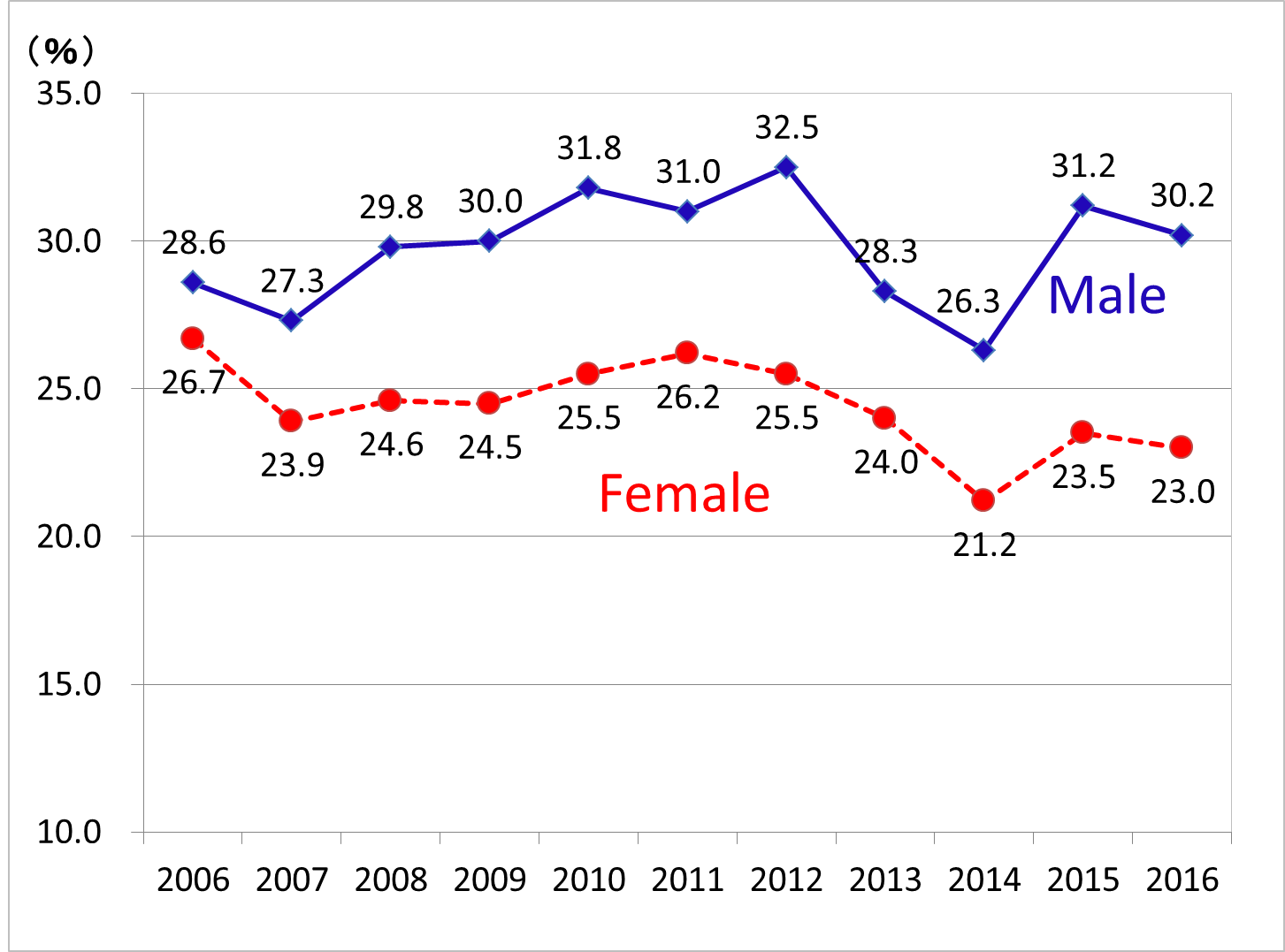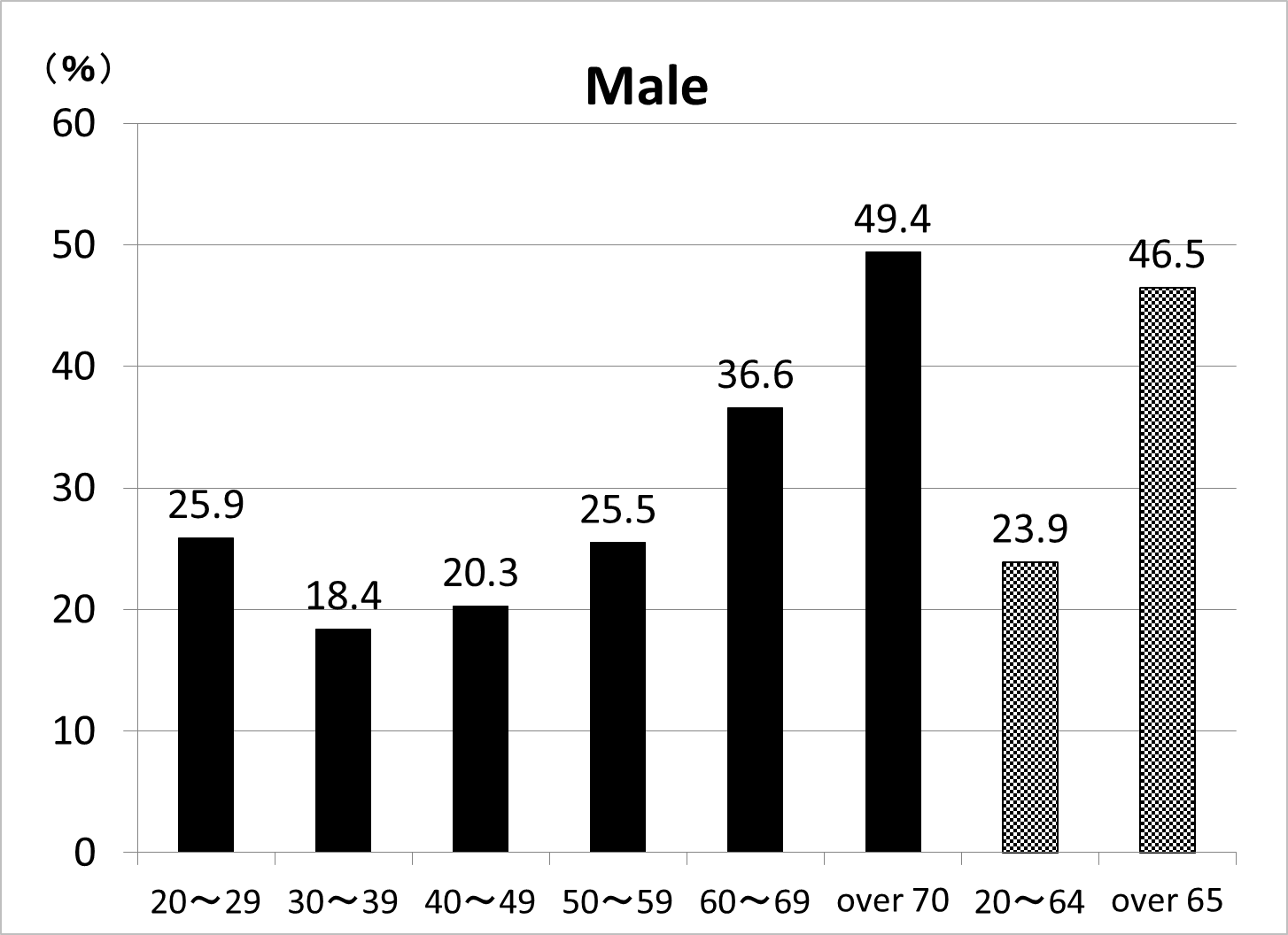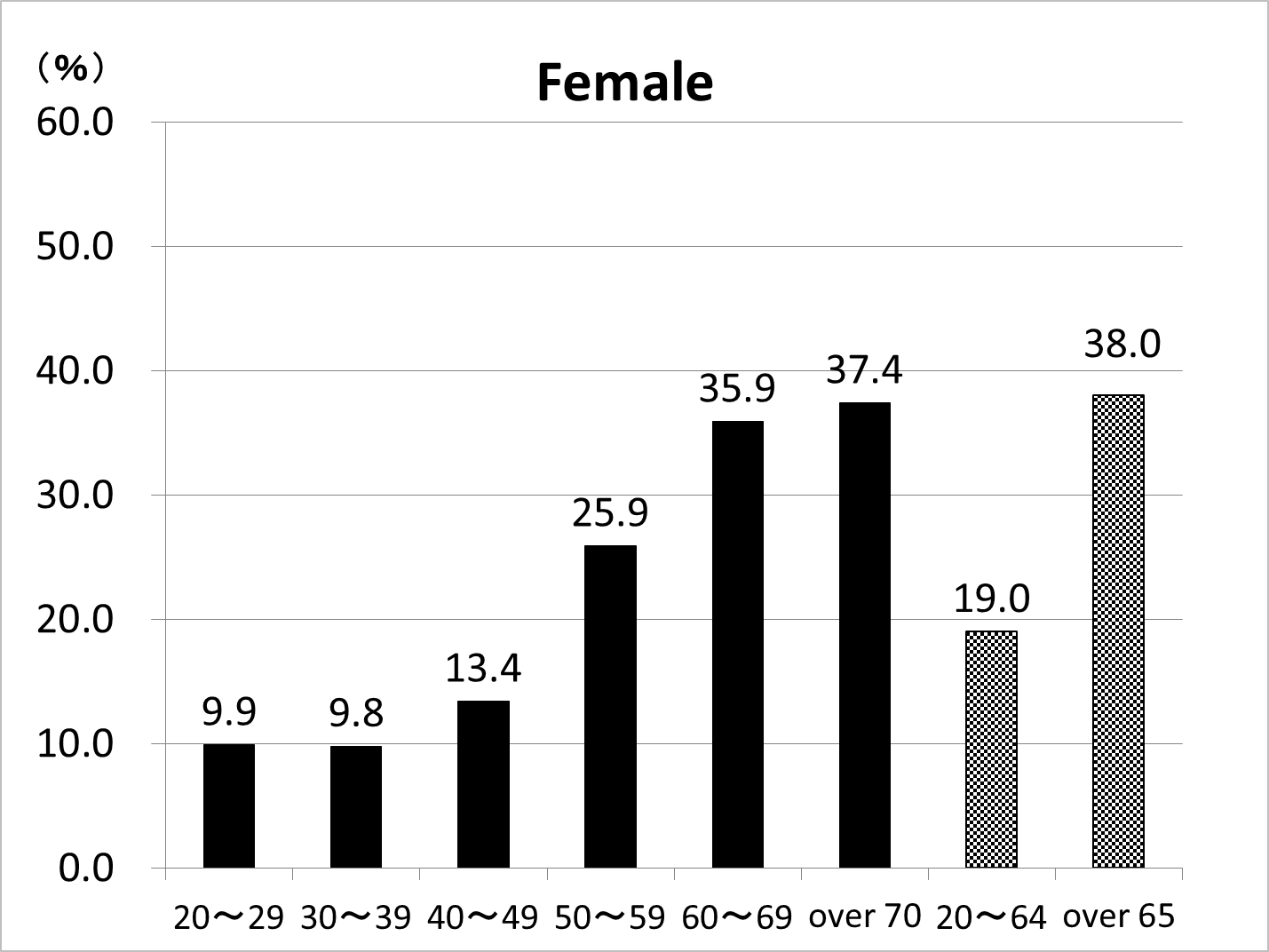Column Finance and the Social Security System 2018.02.05
【Aging, safety net and fiscal crisis in Japan】No.27: Lack of exercise in Japanese people in their 20s and 30s
The Japanese government aims to save on medical expenses by extending the healthy lives of its people. To achieve this goal, it is important for Japanese people to make exercise a habit. However, as shown in Figure 1, the proportion of "people with exercise habits" is flat for males and declining for females. The definition of a person with an exercise habit is someone who has exercised for 30 minutes or more, at least twice per week.
A major concern, as shown in Figures 2 and 3, is that both males and females in their 20s and 30s are contributing to the shortage of exercise. On the other hand, in the case of elderly people aged 65 and older, the proportion of those with exercise habits is 46.5% for males and 38% for females, a level that is twice as high as those of the working population between 20 and 64 years old.

(Source)Ministry of Health, Labor and Welfare


